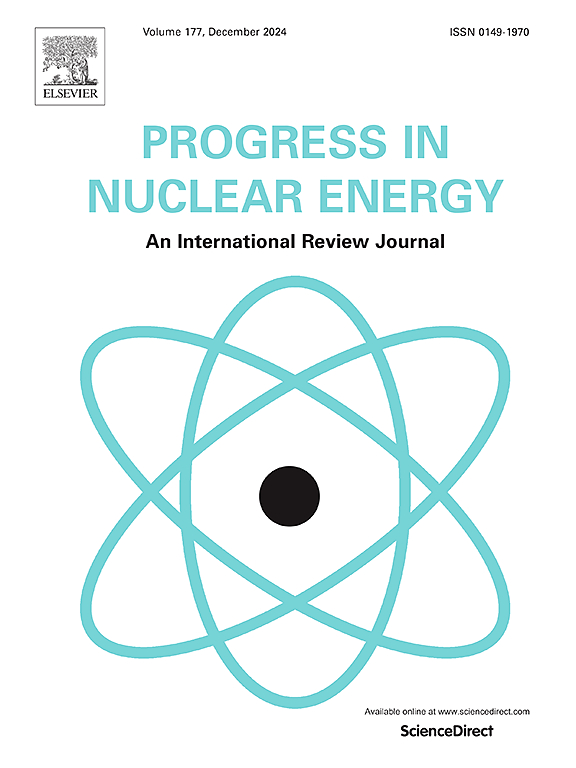An efficient method for solving flow field in high temperature gas-cooled reactor
IF 3.3
3区 工程技术
Q1 NUCLEAR SCIENCE & TECHNOLOGY
引用次数: 0
Abstract
In thermal-hydraulic analysis of pebble-bed high temperature gas-cooled reactor (HTR), the flow field calculation is a crucial and time-consuming process. It can be treated as a mathematical problem of solving sparse linear algebraic equations, which can be solved by direct method or iterative method. By analyzing the geometric model and flow field in HTR, it is found that the flow field consists of one-dimensional (1D) and multidimensional regions. Based on the characteristics of fluid flow in pebble-bed HTR, some acceleration methods are presented in this paper, including a new matrix reordering method, symbolic factorization and block matrix solving. The main idea of matrix reordering is to arrange the 1D regions in a specific order in front of the matrix, while the other regions are placed at the back. After reordering, the fill-ins in Gauss elimination can be greatly reduced, so the direct method can be speed up. The reordered matrix is also suitable for using block matrix solvers to enhance the efficiency of matrix solving. In addition, symbolic factorization is also an efficient technique to reduce the time cost in Gauss elimination by recording the fill-ins and the elimination process. These acceleration techniques can be integrated with matrix solvers to form a variety of solving methods, which have been implemented in the DAYU3D code developed in Institute of Nuclear and New Energy Technology (INET) at Tsinghua University. To evaluate the efficiency of these methods, calculations have been performed on a number of typical cases of pebble-bed HTR. It was found that Gauss elimination coupled with matrix reordering and symbolic factorization techniques, has remarkable advantage compared with other solvers. In comparison to Gauss elimination, about 84%–94% reduction in fluid matrix solving time is observed in the test cases of pebble-bed HTR.
求助全文
约1分钟内获得全文
求助全文
来源期刊

Progress in Nuclear Energy
工程技术-核科学技术
CiteScore
5.30
自引率
14.80%
发文量
331
审稿时长
3.5 months
期刊介绍:
Progress in Nuclear Energy is an international review journal covering all aspects of nuclear science and engineering. In keeping with the maturity of nuclear power, articles on safety, siting and environmental problems are encouraged, as are those associated with economics and fuel management. However, basic physics and engineering will remain an important aspect of the editorial policy. Articles published are either of a review nature or present new material in more depth. They are aimed at researchers and technically-oriented managers working in the nuclear energy field.
Please note the following:
1) PNE seeks high quality research papers which are medium to long in length. Short research papers should be submitted to the journal Annals in Nuclear Energy.
2) PNE reserves the right to reject papers which are based solely on routine application of computer codes used to produce reactor designs or explain existing reactor phenomena. Such papers, although worthy, are best left as laboratory reports whereas Progress in Nuclear Energy seeks papers of originality, which are archival in nature, in the fields of mathematical and experimental nuclear technology, including fission, fusion (blanket physics, radiation damage), safety, materials aspects, economics, etc.
3) Review papers, which may occasionally be invited, are particularly sought by the journal in these fields.
 求助内容:
求助内容: 应助结果提醒方式:
应助结果提醒方式:


